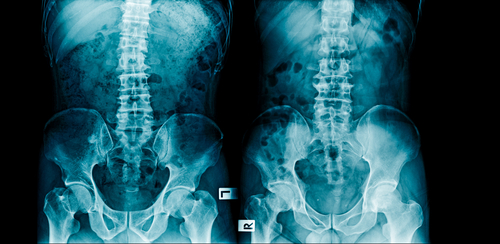Case Report Notes Benefits of Surgical Treatment of Scoliosis in a Young MD Patient

Surgical treatment of severe spine deformities, or scoliosis, can be a treatment possibility for patients with neuromuscular diseases.
A case report titled “Spinal fusion in a patient with Fukuyama congenital muscular dystrophy” was published the journal Brain & Development. It showed that a surgical approach for the treatment of progressive scoliosis improved the life quality of a young patient with Fukuyama congenital muscular dystrophy (FCMD).
“We should provide information about surgical options to patients and their parents and support them in choosing appropriate and adequate treatment,” the authors wrote.
Scoliosis is commonly observed in patients with neuromuscular diseases, and has major impact in patients’ quality of life. Management of this condition is often challenging, but essential for the patients to be able to sit properly and comfortably, and maintain their balance.
The surgical treatment called spinal fusion has become widely performed to treat progressive scoliosis in patients with spinal muscular atrophy, cerebral palsy, and Duchenne muscular dystrophy.
Spinal fusion technique requires the placement of bone grafts in the affected portion of the spine to block its progressive distortion and help new bone to grow. This process allowed for patients to improve their respiratory capacity and overall quality of life, compared to patients who did not receive surgical treatment.
In the report, the authors present for the first time the case of a 13-year-old boy with FCMD who underwent spinal fusion surgical treatment to manage progressive scoliosis.
FCMD is the second-most common form of muscular dystrophy among Japanese and is caused by the genetic mutation of the gene FKTN. It is characterized by generalized muscular weakness, low muscle tone, and central nervous system migration disturbances. About half of the patients have spine deformities.
For two years, the patient showed sustained improvements upon surgery. Although no beneficial effects were observed in the boy’s respiratory function, the treatment prevented scoliosis progression.
“After the surgery, he was able to sit for longer periods without pain, and he and his family were satisfied with the efficacy of the spinal fusion,” the authors wrote.
This report suggests that surgical treatment can prevent progression of spinal deformity and maintain the correction in patients with FCMD. Because of possible respiratory and cardiac complications in advance stages of muscular dystrophy, it is important to clarify the impact of surgical correction as early as possible in such patients through more studies.






